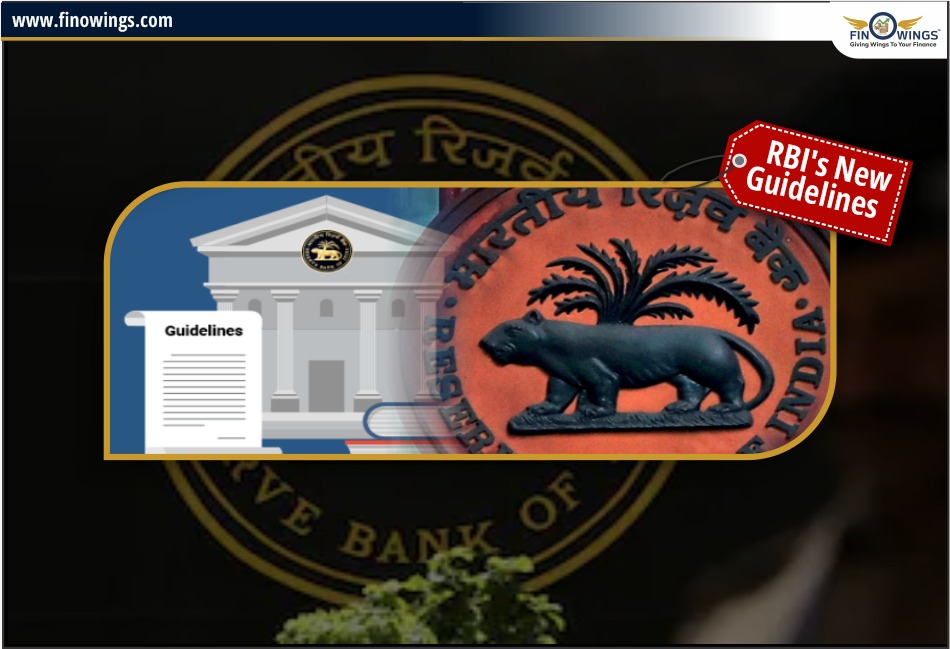Home >> Blog >> Impact of RBI's New Lending Guidelines on PSU Banks & NBFCs
Impact of RBI's New Lending Guidelines on PSU Banks & NBFCs

Table of Contents
- RBI's New Lending Guidelines
- Understanding the Previous Lending Rules
- Explaining the New Lending Guidelines
- Impact on PSU Banks and NBFCs
- Implications for the Financial Ecosystem
- Analyzing the Infrastructure and Commercial Loan Books of PSU Banks
- Technical Analysis of REC's Stock
- Technical Analysis of PFC's Stock
- Technical Analysis of IREDA's Stock
In this news report, we'll dive into the recent RBI guidelines that have impacted PSU banks and NBFCs like REC, PFC, and IREDA. We'll explore the reasons behind these changes, the short-term and long-term implications, and analyze the technical charts to provide a comprehensive understanding of the situation.
RBI's New Lending Guidelines
Hello everyone, in light of recent events, the Reserve Bank of India (RBI) has introduced new lending guidelines that have had a significant impact on the performance of PSU banks and NBFCs like REC, PFC, and IREDA. We will delve into the details of these new guidelines and their implications for the affected entities.
Understanding the Previous Lending Rules
Before we analyze the impact of the recent changes, it's crucial to comprehend the previous lending rules set by the RBI. These rules governed the borrowing and lending activities of financial institutions, shaping the dynamics of the stock market and influencing the performance of various shares. Let's explore the key aspects of the previous lending regulations:
• Regulatory Framework: The RBI's previous lending guidelines established a regulatory framework that governed the lending practices of PSU banks and NBFCs, ensuring adherence to specified norms and standards.
• Market Influence: These rules played a pivotal role in determining the market behavior and the performance of shares, directly impacting the investment decisions of market participants.
• Impact on Share Prices: The previous lending rules exerted a discernible influence on the share prices of entities like REC, PFC, and IREDA, reflecting the interconnectedness of lending regulations and stock market dynamics.
Explaining the New Lending Guidelines
Following the recent infrastructural boost in India, the Reserve Bank of India (RBI) has implemented new lending guidelines to mitigate potential risks and ensure the stability of the banking system. These guidelines aim to address the challenges faced by banks and major NBFCs in financing infrastructure-related projects. Let's delve into the details of these new guidelines and their implications for the financial ecosystem.
Impact on PSU Banks and NBFCs
The new lending guidelines introduced by the RBI entail significant changes in the provision requirements for project financing. Understanding these changes is crucial for both the banking sector and non-banking financial companies (NBFCs) as they navigate the evolving landscape of infrastructure financing. Let's break down the key aspects of the new lending guidelines:
• Increased Provision: Under the new rules, when a project is approved for financing, the provision requirement has been raised to 5% at the project commencement stage, ensuring a higher level of risk coverage.
• Adaptation to Cash Inflow: As the cash inflow from the project begins, the provision decreases to 2%, aligning with the project's revenue generation phase.
• Stress Loan Consideration: In the event of project delays exceeding 3 years, the loan is classified as a stress loan, necessitating a provision of 10% to prepare for potential defaults and risks.
Implications for the Financial Ecosystem
The implementation of these new lending guidelines has far-reaching implications for the entire financial ecosystem, encompassing banks, NBFCs, stock markets, and retail investors. These changes are pivotal in safeguarding the stability of the banking system and mitigating potential disruptions due to infrastructural financing. It is essential to comprehend the impact of these guidelines on the financial landscape and the entities involved.
Analyzing the Infrastructure and Commercial Loan Books of PSU Banks
When analyzing the infrastructure and commercial loan books of PSU banks, it's evident that Bank of Maharashtra (BMH) stands out with the highest exposure in this sector, as indicated by the blue and orange colors representing infrastructure and commercial loans, respectively. This diversified portfolio reflects the bank's substantial involvement in funding infrastructure and commercial projects. Notably, entities like REC and PFC, both PSU banks, are significantly impacted by the recent changes, with a potential long-term visibility of the impact.
Short-term Impacts on Banks and NBFCs
Provision Increase
In the short term, the sudden increase in the provision from 0.4 to 5% is expected to have a negative impact on the profit and loss statement of banks. This escalation in provisioning will also adversely affect the Capital Adequacy Ratio (CAR) of both NBFCs and banks, compelling them to maintain higher capital reserves. Consequently, REC and PFC, with substantial loan books, are likely to witness noticeable effects due to their existing high provisions.
Long-term Positive Impact on the Banking System
In the long term, the corrective measures taken by the RBI are anticipated to yield a positive impact on the banking system as a whole. The rectification of past mistakes from 2013 is expected to shield future banks and NBFCs from potential challenges, fostering a positive influence not only within the banking industry but also across the broader Indian economy. A robust banking sector is pivotal in upholding the strength of stocks, thereby contributing to the overall resilience of the financial market.
Technical Analysis of REC's Stock
Now, let's delve into the technical analysis of REC's stock. Despite a double-top breakout, the impact of adverse news on stock decline is expected to be mitigated. The resilience of REC's stock, characterized by a strong bounce from the bottom, signifies its fundamental strength and the anticipation of minimal long-term impact. However, considering the broader perspective, it's essential to acknowledge the substantial support level that underpins the stock's overall stability.
Technical Analysis of PFC's Stock
Looking at the chart of PFC, a double-top pattern is evident, indicating a breakout that failed to close above the resistance, leading to a market decline. Despite this, the impact is anticipated to be minimal, as evidenced by the rapid recovery from the bottom. The area below serves as a significant support level, with the candle representing resistance for a potential bullish move. The overall chart pattern suggests a crucial interplay between support and resistance levels, influencing the stock's trajectory. Your insights on the chart's outlook are welcome.
Technical Analysis of IREDA's Stock
Turning to IREDA's chart, a top formation occurred, followed by a breakout that couldn't breach the resistance, prompting a subsequent recovery from below. As the stock progresses, it is essential to monitor the support level below and anticipate resistance at the top to gauge its future trajectory.
Disclaimer: This Stock Analysis is only for informational purposes and should not be considered as investment advice. Always do your research and consult with a financial advisor.
Want to start Your Journey in stock market trading and investment? Join our Stock Market Class to become a beginner to an expert trader! We cover everything from the basics of trading to advanced strategies for picking stocks. Plus, we're offering a special discount for women and students. Don't miss out - enroll now and kickstart your path to success in the stock market!
Open a world of Stock Market by Opening a Demat Account with your favourite Broking firm & Get a trading Strategy worth Rs.15,000!
Author
Frequently Asked Questions
- Explore the latest updates on lending regulations by RBI and their implications for PSU banks and NBFCs like REC, PFC, and IREDA.
- Understand the adjustments in provision requirements for project financing under the updated guidelines and their impact on risk coverage.
- Learn about the immediate effects of escalated provisioning on the profit and loss statements of financial institutions and their Capital Adequacy Ratio (CAR).
- Discover the expected long-term benefits for the banking system resulting from corrective measures undertaken by RBI, fostering resilience in the financial ecosystem.





















